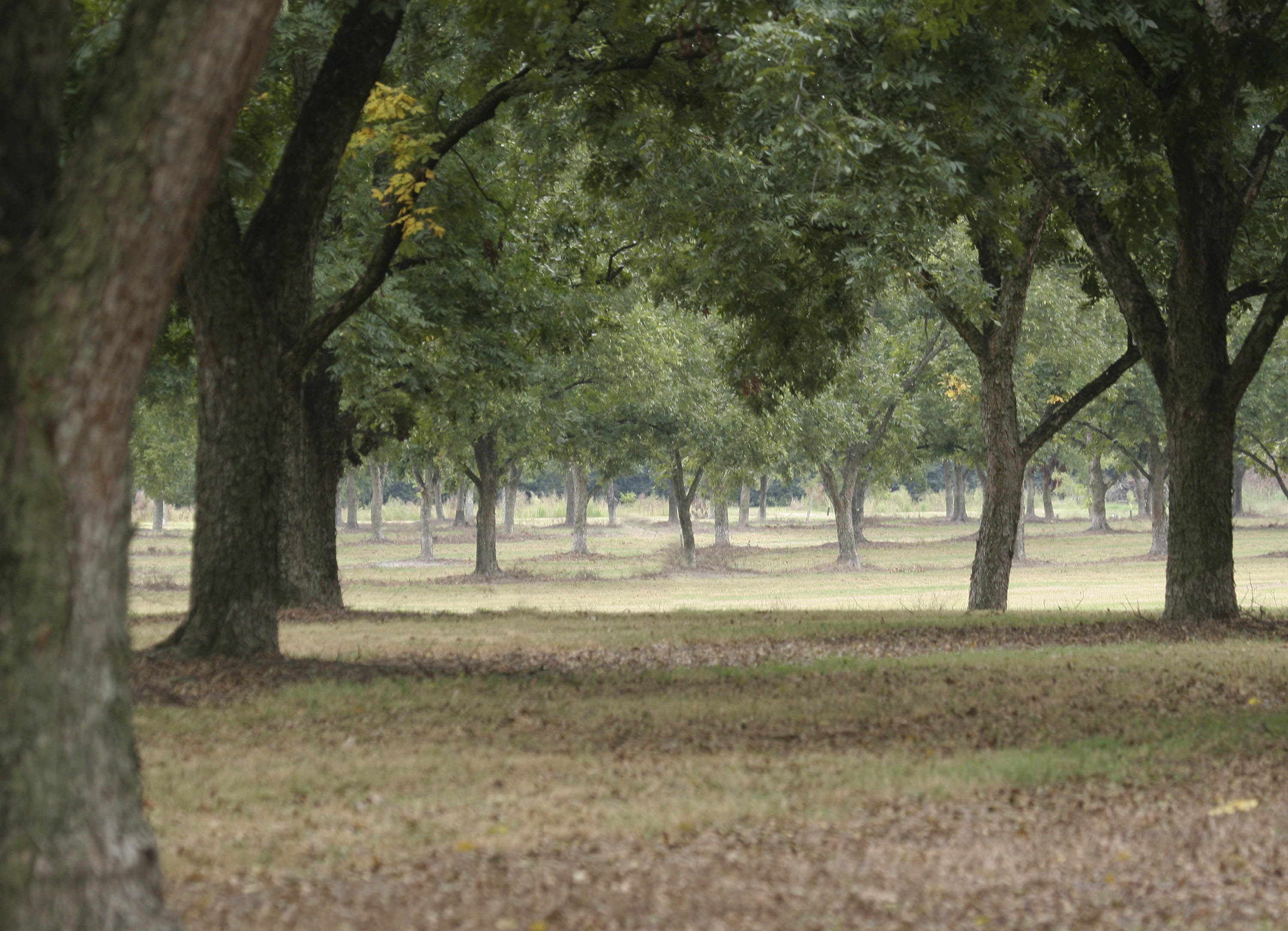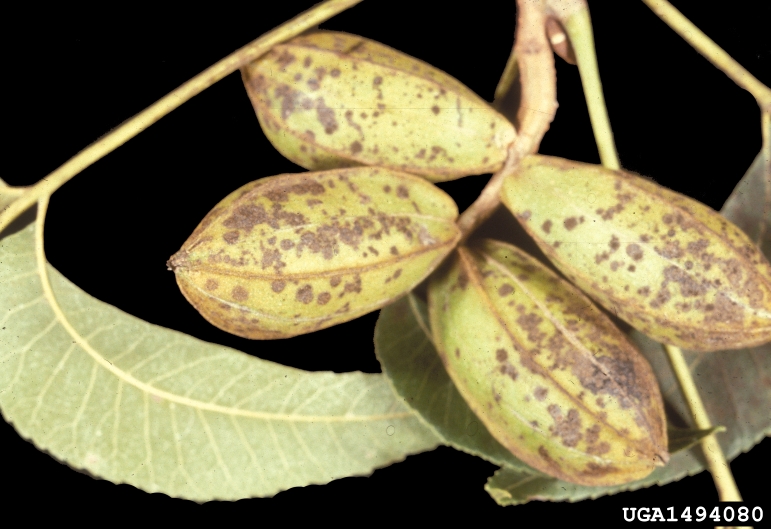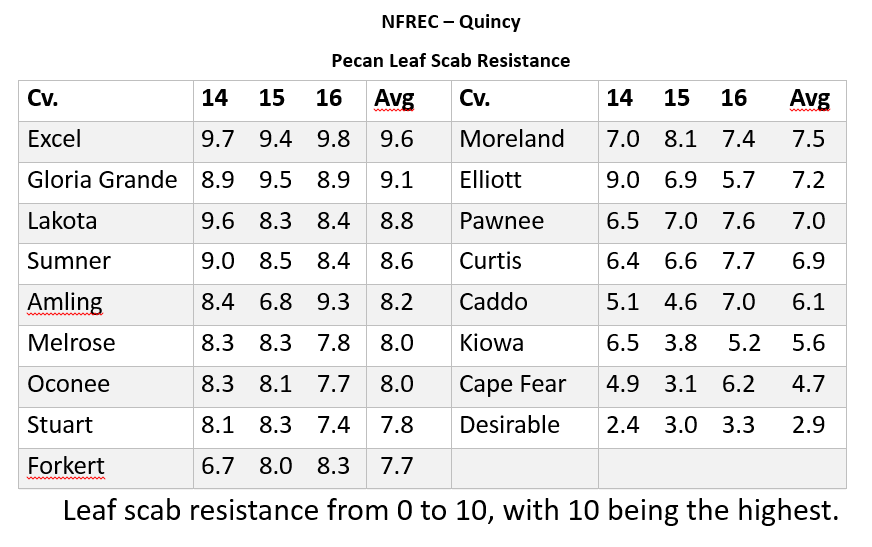
Pecan tree grove in North Florida. UF/IFAS Photo: Thomas Wright.
Pecans are grown throughout the Panhandle of Florida. The western side of the Panhandle tends to be acreage dedicated to home gardeners, while the eastern counties have more commercial acreage. Regardless, many in the agriculture community are interested in pecans, because they either grow them commercially, or have some planted on their farm for local consumption. UF/IFAS Extension agents receive a steady stream of pecan questions throughout the year. A lot of the questions tend to focus on reinvigorating older orchards, remedying alternate bearing, and disease management. Pecan Scab is the most devastating of pecan diseases in the Southeastern United States. Disease samples containing scab are frequently brought in to Extension Offices seeking assistance.

Pecan Scab symptoms on the nut shuck (Photo Credit: University of Georgia Plant Pathology , University of Georgia, Bugwood.org)
Pecan Scab is caused by a fungal pathogen called Cladosporium carygenum. Scab can reduce yields 50 to 100%, if not managed. Years in which pecan scab is worse tend to be years with excessive rainfall, much like 2017. Symptoms are small dark lesions (spots) on the leaves, twigs, and nut shucks. The lesions can grow together, and with extreme scab infections, the lesions started on either side of the leaf will eventually go through the leaf, and some even develop a shot hole appearance. Conditions of prolonged leaf wetness is the optimal environment for scab development.
The best way to manage pecan scab is to plant resistant cultivars. Specialists in Florida and Alabama have developed a list of recommended cultivars with some varying levels of scab resistance. The varieties include Gafford, McMillan, Excel, Kanza, Adams 5, Philip, Gloria Grande, Lakota, Sumner, as well as several others listed in the chart below. Some of the recommended pollinator cultivars are Amling and Syrup Mill. The data in the chart were derived from Dr. Pete Andersen’s research of scab resistance in cultivars grown in Quincy, Florida, at the UF/IFAS North Florida Research and Education Center.

Dr. Pete Andersen’s 3 year research data of scab resistance on several pecan cultivars in Quincy, FL.
Choosing appropriate cultivars is the best way for homeowner pecan growers to deal with scab, as spraying protectant fungicides is not an option for non-commercial growers. For commercial growers a detailed spray schedule can be followed from bud-break to shell hardening. A plethora of fungicides can be used, but should be rotated to prevent resistance development. Some of the fungicides used for scab control include tebuconazoles, azoxystrobin, kresoxim-methyl, flutriafol, triphenyltin hydroxide, and dodine. Fungicide recommendations do change over time, so check with local Extension Agents to receive the latest recommendations.
Sources for additional information on Pecan production:
The Pecan Tree
Pecan Cultivars for North Florida
UGA Pecan Production Website
UGA 2017 Commercial Pecan Spray Guide
Southeastern Pecan Growers’ Handbook
- Battling Scab in Panhandle Pecan Trees - September 22, 2017
- Where to Start with Marketing Fresh Produce? - April 28, 2017
- Using the Linear Bed Foot System for Vegetable Fertilization - August 26, 2016
